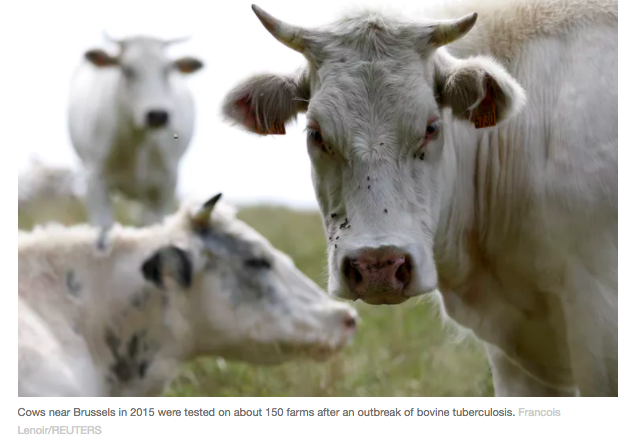Earlier this month, in Djibouti, we were conducting research in the Office of National Assistance for Refugees and Displaced Persons (ONARS). In response to our questions about effects of President Trump’s executive orders (also known as “travel bans”) on refugee resettlements, Hussein Chardi, the director of refugee camps at ONARS, carefully described his country’s raison d’être:
In Djibouti, we have a big heart. We open our hand. Refugees should stay here and work with dignity.
As the United States and some European countries add ever more isolationist policies, closed borders, and dramatic curtailments in the number of refugee resettlements, what can we learn from how this small country facing considerable security and economic threats from abroad treats humans on the move?
Djibouti is a tiny, coastal country that has for centuries been situated at the confluence of numerous and multidirectional flows of traders, travelers, scholars, laborers, and refugees back and forth between the Arabian Peninsula and the African interior. The Red Sea’s Bab el Mandeb Strait, between Djibouti and Yemen, is only 20 miles across in places, enabling relatively easy intercontinental travel. With a population of fewer than 900,000 people, today Djibouti hosts 22,640 refugees and asylum-seekers. That equals 2.5 percent of its entire population.
Djibouti was founded as a host country for persons seeking refuge. It won independence from France in 1977, just three weeks after the Ogaden War began between Ethiopia and Somalia. Tens of thousands of refugees, mostly fellow ethnic Somalis from Ethiopia, flooded across the border, seeking safety, food and water. All refugees were welcomed, according to one man we met at the ONARS office, Abdellahi Hargeye, whose family fled from Ethiopia to Djibouti in 1977. Eight years later, when famine and conflicts in the Horn of Africa intensified, hundreds of thousands more refugees poured across the Djiboutian border.
Government officials in Djibouti proudly cite this history, a national ethic of hospitality, and the economic advantages of population movement and diversity as all central to the country’s new refugee law. The law includes newly promulgated regulations ensuring refugees, asylum-seekers, and Djiboutian citizens equal rights to education, health care, work, and even movement outside refugee camps.
Today, migrants in Djibouti include Yemeni refugees fleeing war, Somalis fleeing political insecurity and drought, and Ethiopians escaping political persecution and grinding poverty.
Djibouti today also acts as a conduit through which economic migrants — mostly Ethiopians — venture to Saudi Arabia and other Persian Gulf states for work. Men and women travel through Djibouti’s sweltering desert landscape, sometimes packed into vehicles and sometimes walking on foot for several days. They are then smuggled or trafficked across the Red Sea in crowded, makeshift boats, furtively guided through war-torn Yemen, and finally let into Saudi Arabia. As conflict spikes in Yemen, in the last year thousands of these migrants have been deported or evacuated through Djibouti en route either to their countries of origin or illegally back to the Arabian Peninsula again.
However, despite recent legal and programmatic attempts on the part of Djiboutian federal agencies to promote local integration, protection and assistance, these are not panaceas. Refugees, economic migrants and trafficked persons continue to face discrimination and difficult conditions inside camps and along their myriad routes through the country. Many refugees and migrants in Djibouti struggle to find jobs, learn French, and compete with local residents for scarce resources.
But rather than building walls, policing borderlands, and litigating access to services, Djibouti’s government remains most concerned with providing anti-discrimination protections and humanitarian assistance to people on its soil. As an International Organization for Migration (IOM) representative told us, “Djibouti could actually close off their borders. They are so small. But they don’t.”
With all the attention on the Trump administration’s travel ban and its legal challenges, two key things have been drowned out: first, in addition to voiding the possibility of resettlement for individuals and families from select countries entirely, the executive orders cut the United States’ refugee resettlement program in half. Second, the recent proposed budget from the administration guts foreign international development assistance through the State Department, endangering previous U.S. commitments, for one, to the United Nations High Commission for Refugees (UNHCR), which provides protection and assistance to the hundreds of millions of people seeking refuge and asylum all over the world.
Today only 1 percent of all the world’s refugees are resettled. Most refugees and asylum seekers spend years in camps or temporary accommodations, awaiting durable solutions. Under the 1951 Refugee Convention and subsequent protocol, durable solutions include: repatriation, resettlement or local integration.
This is what thousands of Somali refugees have found in Djibouti. Somalis make up the third largest group of refugees in the world today, and they have been refugees the longest, as decades of political instability have prevented them from safely returning home. Somalis we met in the Ali Addeh refugee camp in Djibouti were born and lived to adulthood in the camp. It is now their home in every way.
Perhaps nothing symbolizes Djiboutian hospitality more than what we were told by Ethiopian migrants, walking along the rocky coastline of Djibouti, to catch boats to Yemen. These young men carried no water, no food, and no backpacks, yet they said their journeys took at least four days from the border.
We asked, how did they survive? Nomads gave them biscuits and water, they replied — life-saving gifts from some of the world’s poorest communities, people who themselves receive only weekly deliveries of water rations from the Djiboutian government on which their own survival depends.
Djibouti presents an alternative to isolationism: hospitality and protection from the community and the nation, as an intentional response to regional insecurity.
Lahra Smith is a political scientist and associate professor in the School of Foreign Service at Georgetown University.
Lauren Carruth is an anthropologist and assistant professor in the School of International Service at American University.




